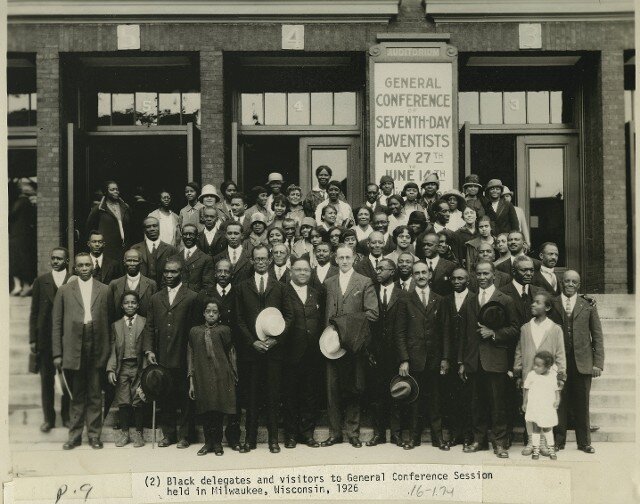History of Regional Conferences
The regional conferences of the Seventh-day Adventist church were formed over 70 years ago. These are Black conferences – such as the Central States Conference that covers our state of Nebraska. Allen Chapel here in town is part of the Central States Conference. In 1909, the North America Negro Department was organized by the General Conference to support the work and organization of Black Seventh-day Adventists.[1] During the next several years, many state conferences had a department specifically focused on mission to Blacks.[2]
In 1942, the name of the Negro Department was changed to the Colored Department in an attempt to be less divisive.[3] Then in 1944, 100 years after the Great Disappointment, the General Conference in its Spring Council recommended that regional conferences be organized.[4] By this point, there were approximately 17,000 Black Adventist members throughout about 233 churches.[5] It was decided that this member base was big enough to be able to support a conference financially. However, for each conference to financially support itself, the territory covered by each conference had to be bigger than just one state.[6] Thus the term Regional Conference was developed and conferences were segregated.
Conferences were assigned territory based on membership density.[7] Despite the segregation caused by this division of conferences, documents published on April 2, 1970 by the General Conference and July 28, 1981 by an ad hoc committee of the General Conference outlines that this was not to be segregation. The document explained that “Seventh-day Adventist churches open their doors to any would-be worshipper or prospective member regardless of race or color and welcome such with brotherly love and concern”[8] and “conferences selecting qualified spiritual leaders as pastors shall not be limited by race or color.” Should some black pastors be appointed to white churches and some white pastors appointed to black churches, a very desirable example of church fellowship and understanding would result; therefore, programs to this end should be undertaken with the support and guidance of unions”[9] In this way, the General Conference attempted to emphasize the importance of inclusion while still allowing the Regional Conferences to be independent. Today, Regional conferences are still independent but united with the world church, and their regions overlap with the state conferences.
[1] [2] [3] http://www.blacksdahistory. org/negro-department.html
[4] [5] [6] [7] [8] [9] https:// adventistregionalministries.org/history/
Jade Covel is a junior studying religion.


